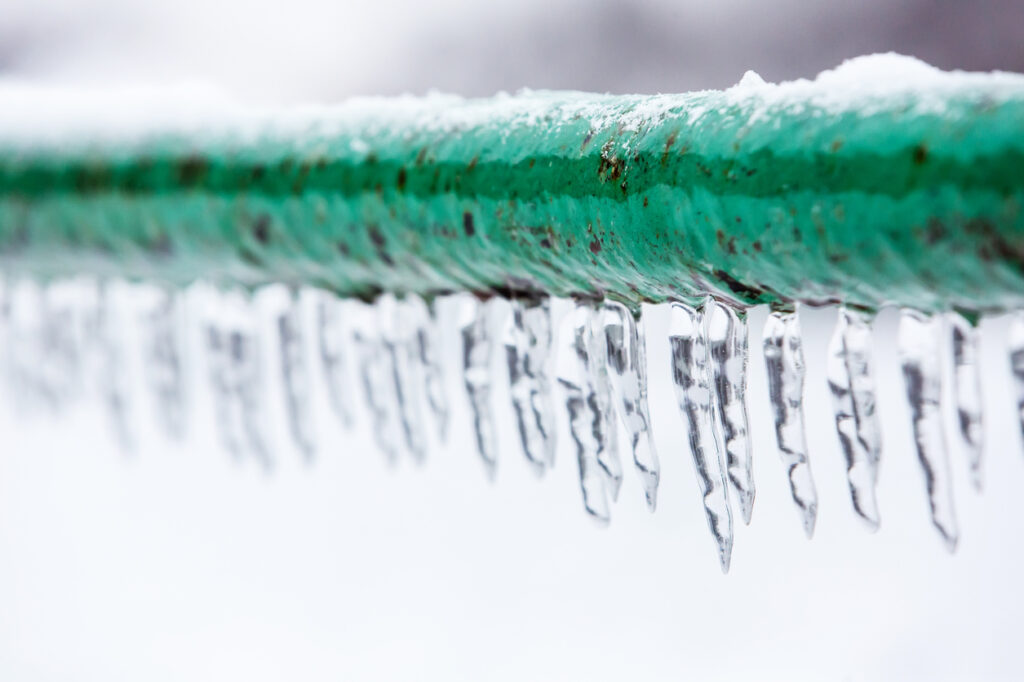
When winter temperatures drop below freezing, the pipes in your home also get colder. While your home provides some insulation, your pipes will drop in temperature too. If the outdoor temperature gets low enough or stays below freezing long enough, your pipes could freeze.
Freezing pipes can cause serious problems for homeowners. Freezing water expands. As the ice in your pipes takes up more space, it puts pressure on the connections and walls of your pipes. Too much pressure and your pipes will burst.
How To Prevent Frozen Pipes
The best thing you can do as a homeowner is to prevent your pipes from freezing in the first place. There are several ways you can prevent frozen pipes.
- Make sure the temperature in your home is above 55 degrees. Don’t forget to consider all areas of your home. Your garage or addition can be prime places for your pipes to freeze. You can use space heaters to keep the temperature warm enough to prevent frozen pipes.
- Keep a trickle of water running through your pipes. Even a small amount of moving water will help prevent your pipes from freezing. Running water increases your water bill, but not significantly compared to the cost of repairing a burst pipe.
- Keep cabinet doors open. While the temperature in your home may be warm enough to prevent frozen pipes, if your cabinet doors are closed, the warm air may not reach your pipes. The temperature difference can be enough for them to freeze.
- Apply pipe insulation to your water lines. Adding insulation may be enough to keep the pipes too warm to freeze.
What To Do if Your Pipes Freeze
If you think you have a frozen pipe, you should work to fix it right away. The sooner you can thaw your pipes, the better your chance of preventing a pipe burst.
Here are some things you can do if your pipes freeze:
- Turn off the water supply to the frozen area. If you’re unsure where the frozen pipe is, you should turn off your main water supply.
- Find the frozen pipe by looking for pipes near the outside of your home, in crawl spaces, an exterior wall, or in the attic. Frost on the pipe is a strong indication that the pipe is frozen.
- Turn on the faucet of the frozen line. An open tap allows for pressure release, which can prevent a burst.
- If the frozen pipe is accessible, use gentle, steady heat to warm the pipe and thaw the ice. A hairdryer is an excellent choice for this process because it gets hot enough to heat and thaw the pipe without damaging it. You must thaw the pipe entirely before stopping.
When To Call a Professional for Frozen Pipes
While you may be able to thaw a frozen pipe on your own, it’s best to call a professional plumber at times. A professional can pinpoint the frozen pipe and have the necessary equipment to safely and efficiently thaw your pipes. Plus, they’ll be able to see signs of damage or leaks that you may miss.
To get professional thawing services for frozen pipes, choose Comfort First Heating & Cooling. We’re the area plumbing experts who provide people and comfort you can count on.
Schedule your appointment today by calling 800-279-4822
or booking online!
















